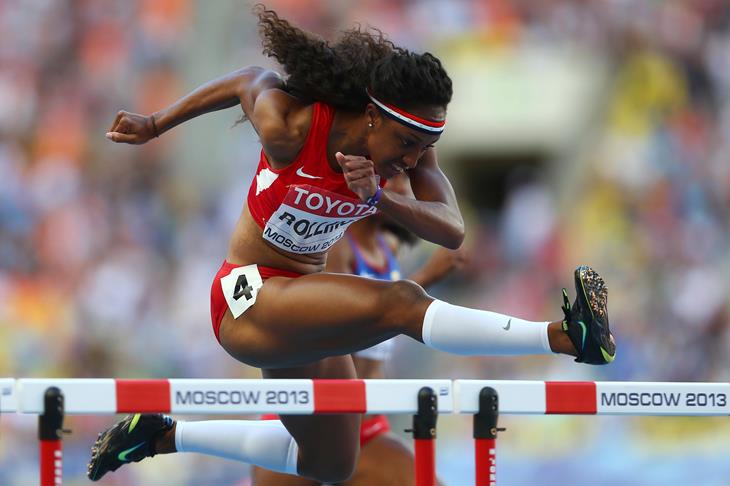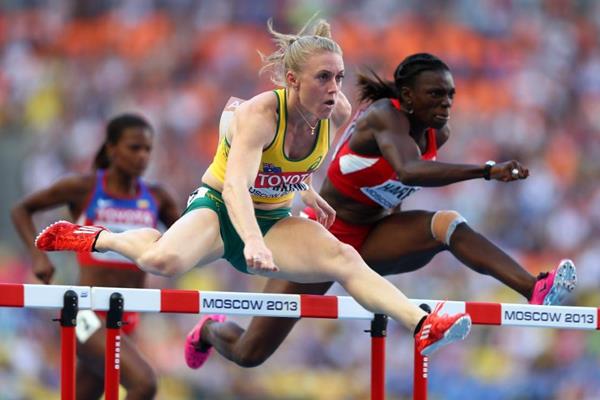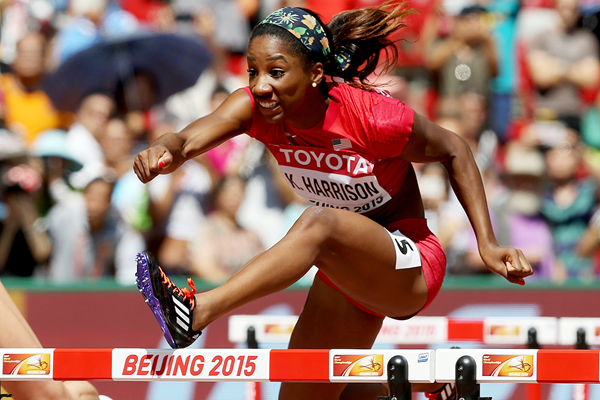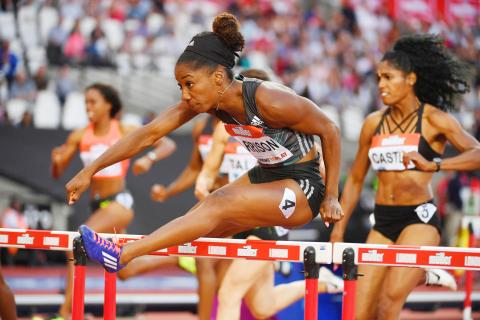Low Hurdle Clearance
Recently a parent of one of the youth hurdlers that I coach sent me a still photo of his son clearing a hurdle in a race, remarking that another coach had said that his son looked high over the hurdle. I looked at the photo, and, at first glance, I agreed that he looked a bit high. His heel was crossing the bar, and his hamstring and butt were well above the bar. But when I looked at the photo more closely, considering the style of hurdling that I teach – particularly to female hurdlers and youth hurdlers, whose hurdles are only 33 inches high – I saw that he wasn’t clearing the hurdle too high. It’s a style that I also feel applies to males clearing 39 and 42 inch hurdles, but I’ll get more into that later. First I want to focus on female hurdlers and why their aim should be to literally “step” over the hurdles in a motion that almost mimics an open sprint stride.
[am4show not_have=’g5;’]
[/am4show][am4guest]
[/am4guest][am4show have=’g5;’]
The style that I teach emphasizes not only leading with the knee of the lead leg, but driving with the knee, and raising the knee to where it is higher than the crossbar. From that angle, which creates the feeling of coming down on the hurdle, the lead leg extends at a downward angle instead of a flat, horizontal angle. Thus, the lead leg is able to cycle as it does in a regular sprint stride, in a continuous flowing motion. With the lead leg, there is no effort, no “kicking,” no “snapdown.” The power aspect has nothing to do with forceful movements, but with precise movements executed at fast speeds. With this style, the trail leg is the leg that is forceful, and the moment of force is the moment of take-off. The push off the back leg creates speed that carries the athlete through the hurdle. The trail leg then drives to the front without pausing, creating more speed coming off the hurdle.
So in terms of high vs. low hurdle clearance, I don’t look at where the hamstring clears or where the butt clears. I look at where the heel clears, where the calf clears. If there is space between the crossbar and the heel, between the crossbar and the calf, then yes, you’re clearing the hurdle too high. But the hamstring and butt clearing highly, with this style, merely indicates that you are extending the lead leg downward, not horizontally. So, those parts of the lead leg will appear to be too high when in fact they are actually not.
In the above photo, you can get an idea of what I am talking about. Sally Pearson is extending her lead leg at a downward angle. The calf skimmed the crossbar, but there is space between the hamstring and the bar, and even more space between the butt and the bar. But in no way is she “high” over the hurdle. Similarly, Dawn Harper-Nelson is coming down on the hurdle. Her Achilles and calf will skim the bar, but her hamstring and butt, like Pearson’s will have some space between them and the bar. So, what looks to be high is actually not.
The above photo of Keni Harrison provides a similar picture. Just looking at the photo, she looks too high. But look where her heel is in relation to the bar. Skimming it. And like Pearson in the previous photo, she is cycling the lead leg, coming down on the hurdle. The heel will land under her hip, allowing a seamless transition when she is back on the ground.
In the above photo, also of Harrison, you see what she looks like after her heel, Achilles, and calf have crossed the bar. Now her hamstring is crossing, and you can see the space between the bar and her hamstring. You can also see the downward angle at which she is attacking the ground. In a sense, what we’re seeing is the difference between a bent-leg lead and a straight-leg lead. With the bent-leg lead, the entire lead leg will not skim the bar; only the heel, Achilles, and calf will. With this style, descent off the hurdle begins as soon as the heel has crossed the bar. With the straight-leg style, the descent doesn’t begin until the hamstring has crossed the bar.

In the above photo of Brianna Rollins, we get a picture of the straight-leg style, which is more typical of male hurdlers. You can see that her entire lead leg will skim the hurdle, from heel to glute. When the glute passes the bar, then she will snap down the lead leg. The fact that Rollins has had success with this style shows that it is still very effective. I don’t coach this style anymore for the simple fact that I feel it is less efficient, more effort-ful, and therefore more difficult to execute in a ten-hurdle race.
While the style of hurdling that I teach is definitely more suited to female hurdlers and to youth hurdlers, it can also be applied – very effectively – to male hurdlers, although it won’t look the same when executed. The reason that it can work for guys lies in the emphasis on the push off the back leg. When the hurdle raises, the push off the back leg must be done with more force. More force elevates the hips, making the hurdle smaller, so to speak, but it does so without causing the hips to rise. The hips are still able to push forward. So, in effect, you’re moving in two directions at once. The push off the back leg provides the vertical element that allows you to come down on the hurdle, while the forward thrust of the hips provides the horizontal element that allows you drive through the hurdle so that you don’t float at all in the air. Meanwhile, the lead leg still cycles the same as a female hurdler’s would, except the hamstring and butt will clear the hurdle comparatively low, with less space between the leg and the bar. But the principles remain the same.
The only exception for the above would be the smaller male hurdlers. They have to extend their lead leg horizontally longer prior to beginning to descend. They can’t afford to come down on the hurdle when extending their lead leg because, if they do, they will grab the hurdle with the hamstring or butt of the lead leg. Still, even for the smaller male hurdlers, the aim would be to keep the entire hurdle motion fluid. Even when extending the lead leg horizontally, don’t “kick” it out, don’t make it a power move. You can’t execute a power move effectively for ten hurdles. You’ll fatigue, and your form will break down.
When the push off the back leg is emphasized, along with a forceful forward thrust of the hips, hurdling becomes easier, and it becomes easier to keep the legs in sprinting position. When experimenting and messing around after practice some days, I’ve had female athletes as small as 5-3 who were able to clear 42 inch hurdle just by pushing off with more force each time I raised the hurdle one click. Last week, when I had one of my 14-year-old youth hurdlers do a set of quick-steps over 36-inch hurdles after doing a set over his race height of 36’s, all I instructed him to do was to push off the back leg with more force. And he was amazed at how easy it was to clear the higher hurdles.
[/am4show]



